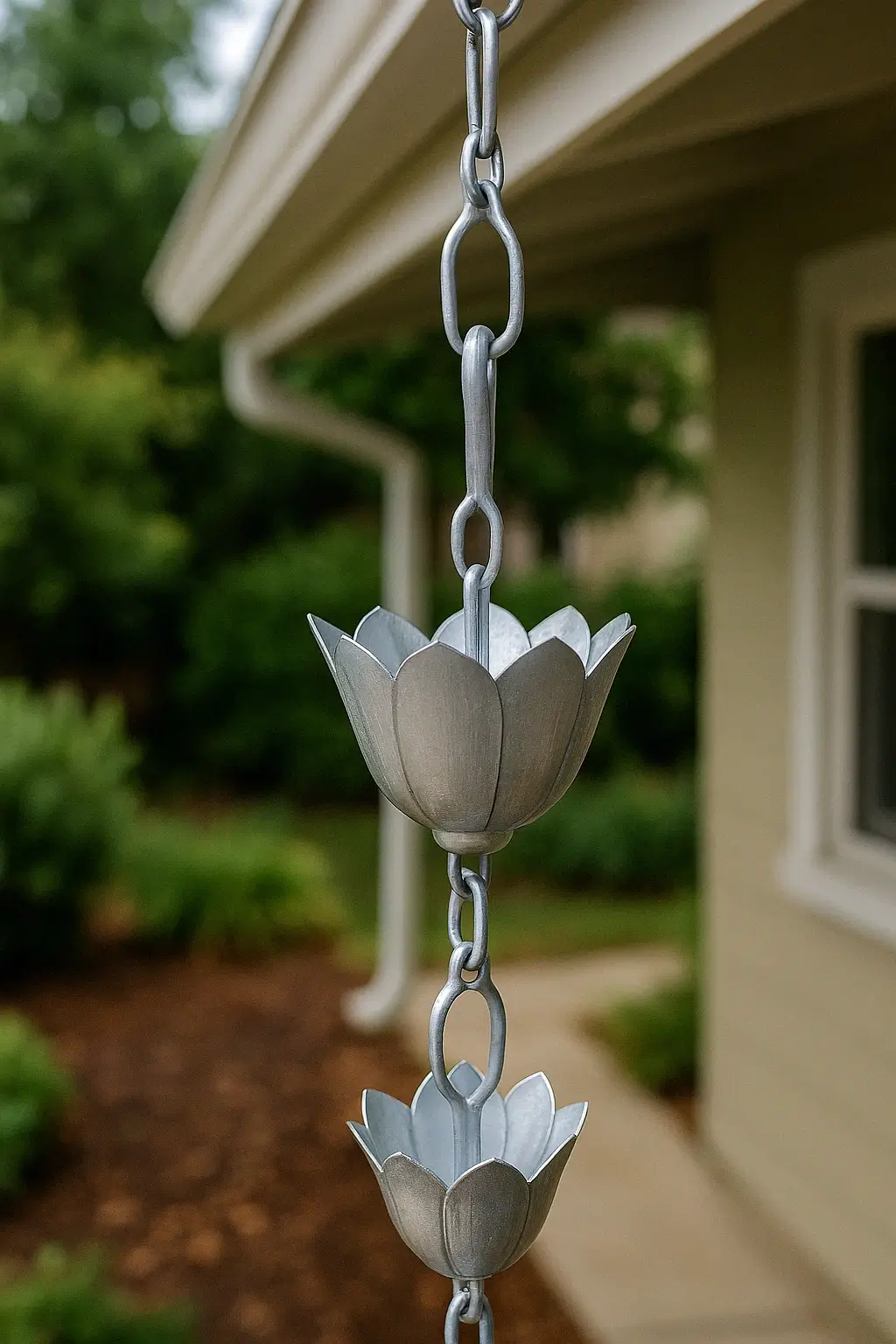Rain chains began in Japan centuries ago, channeling rainfall from temple roofs into ground basins. Today they serve the same purpose—directing gutter water—while adding a sculptural accent to any façade. Here’s how they work, the design options available, and situations where they can outshine a traditional downspout.
How Rain Chains Work
- Guided Flow – Links or cups slow the water’s descent, coaxing it downward in a visible stream instead of a splashy sheet.
- Soft Landing – Water empties into a gravel basin, decorative bowl, or underground drain to prevent soil erosion.
- All-Season Durability – Quality chains are forged from aluminum, copper, or powder-coated steel, so they withstand hail and rapid freeze-thaw cycles.
Customer benefit: You see rainfall turned into a soothing water feature while safeguarding siding and foundations from splash-back.
Design Options That Fit Any Architecture
| Style | Visual Appeal | Ideal Setting |
| Link Chain | Minimalist, blends with modern lines | Commercial glass façades, mid-century homes |
| Cup Chain | Small cups catch and pour water downward | Cottage exteriors, covered entries |
| Sculpted Shapes (bells, leaves) | Statement piece, custom patinas | Boutique storefronts, garden courtyards |
When Rain Chains Make Sense
- Limited ground space – A chain and small basin take less room than a downspout elbow and splash block.
- Accent lighting – Landscape uplights sparkle through the stream for nighttime curb appeal.
- Garden irrigation – Pair with a ceramic pot to create a slow-fill water source for nearby beds.
- Low-traffic zones – Chains move freely in wind; placing them away from walkways keeps clothing dry.
- Architectural focus – Historic remodels and outdoor dining patios often favor the artistic touch.
Situations That Still Favor Downspouts
- Very steep roofs with large catchment areas
- Multi-story walls where wind exposure creates excessive sway
- Areas prone to heavy ice buildup without adequate winter maintenance
Installation Snapshot
- Replace the downspout outlet with a wide hanger loop.
- Attach the chain and confirm it reaches the catch basin without tension.
- Set a gravel-lined pit, decorative bowl, or drain grate beneath the chain.
- Test with a garden hose to verify splash control.
(Most single-story installs wrap in under an hour.)
Care in Two Minutes
- Seasonal rinse – Spray the chain to clear pollen or debris.
- Check anchoring after severe storms to make sure the basin remains centered.
- Inspect for patina on copper styles; some owners enjoy it, others prefer a quick polish.
Wrap-Up
Rain chains turn rainfall into a design feature while still protecting walls and soil. Curious whether a chain or a downspout fits your property’s layout? Give Expert Gutters a call—we’ll walk the site, talk through design goals, and set up an installation that works in every season.



